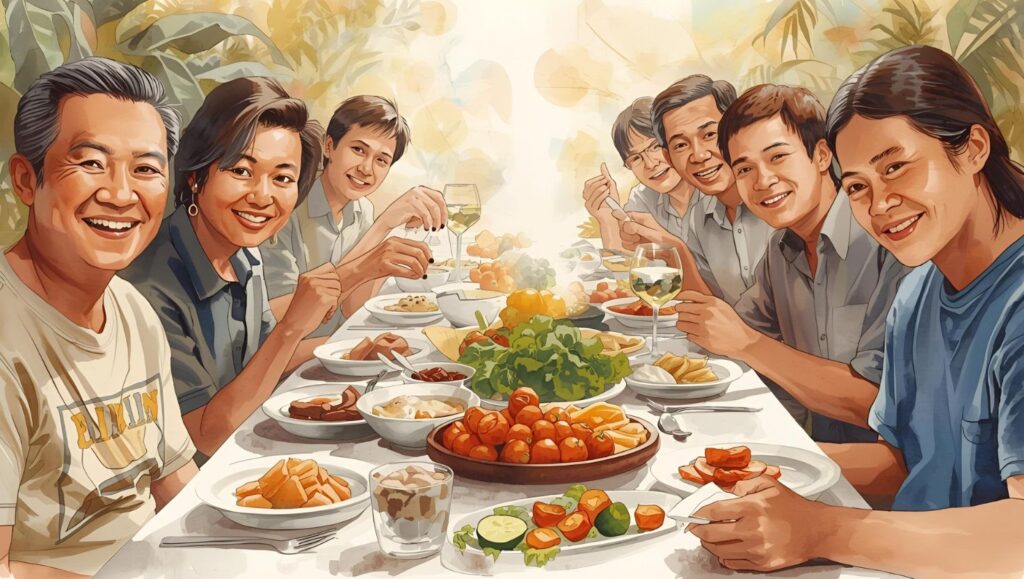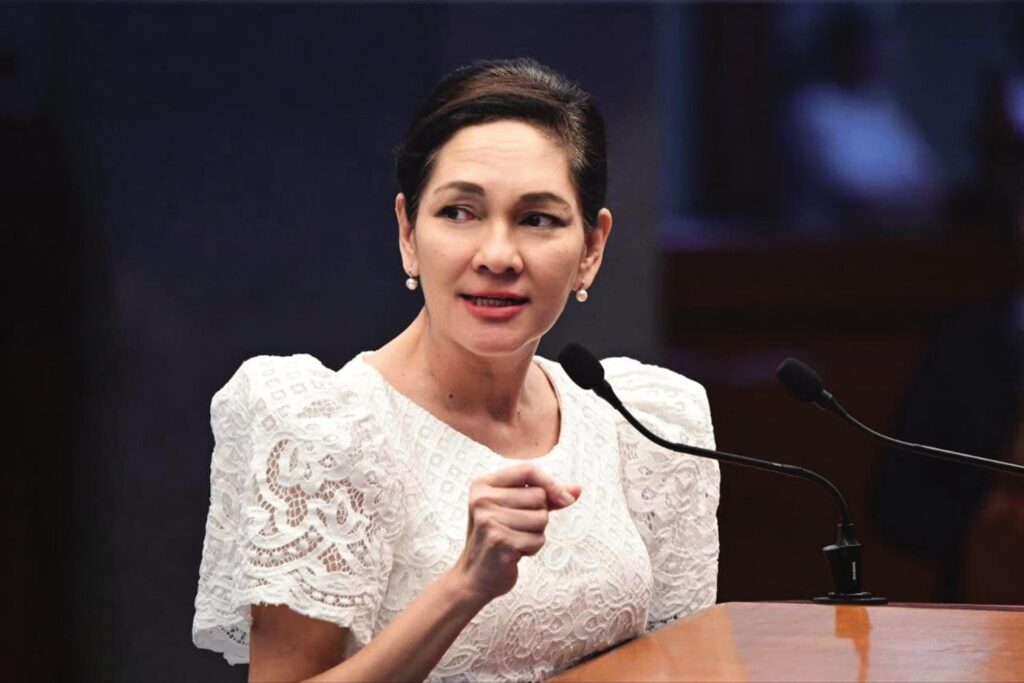Step into a Filipino home and you will almost always hear the same words: “Tuloy po kayo! Kain na!” It doesn’t matter if you’re a long-lost relative, a new neighbor, or even a stranger — the welcome is the same. A chair is pulled out, food is offered, and in a few minutes, you’re treated like family.
I’ve experienced this countless times, both in my personal life and in my work teaching organizations how to design customer experiences and build service leaders. Whenever I ask what makes Filipino service special, people go back to the same answer: hospitality. But to understand why this is so powerful, we need to ask a deeper question — where does it come from?
Filipino hospitality isn’t a slogan created by the tourism industry. It’s not just about being polite. It’s a value rooted in who we are as a people. From the spirit of bayanihan that carried houses on the shoulders of neighbors, to the family-centered traditions that treat every guest as kapamilya, our hospitality is more than a habit. It is our way of saying, “You belong here.”
In this article, we’ll trace those roots — from the communal unity of bayanihan to the everyday generosity of food, fiestas, and pakikisama. Because when we understand where our hospitality comes from, we also understand why it continues to be one of the Philippines’ greatest gifts to the world.
Bayanihan: Hospitality as Communal Unity
When people talk about Filipino values, bayanihan is often the first image that comes to mind: neighbors carrying a bahay kubo on their shoulders, moving it together to a new place. It’s such a simple scene, but it captures something profound — the belief that no one should be left alone to carry heavy burdens.
This is the root of our hospitality. When we welcome someone, we’re not just offering food or a seat. We’re saying, “We’ll carry your load with you.” That’s why even in the smallest barrio, if a stranger passes by, someone will call out, “Tuloy po kayo!” and share whatever is on the table.
I’ve seen this spirit alive in organizations too. In my workshops, I often challenge leaders to imagine their teams as a modern version of bayanihan — not lifting houses, but lifting each other’s ideas, workloads, and challenges. When employees embody bayanihan at work, hospitality is no longer just external. It becomes the culture people feel inside the organization.
At its core, bayanihan teaches us that hospitality isn’t just about smiling at guests. It’s about community. It’s about making sure no one feels like an outsider, and no one carries the weight alone.
Family-Centric Values: Guests as Kapamilya
In the Philippines, family is everything. It defines identity, shapes decisions, and becomes the first circle of care. But what’s remarkable is how this circle expands. When someone visits your home, even for the first time, they are treated not as outsiders but as kapamilya — family.
I remember visiting a small community in Quezon for a training program. I barely knew anyone there, but the moment I arrived, they welcomed me as if I were a long-lost relative. They prepared food they had probably saved for their own families, offered me the most comfortable chair, and kept insisting, “Kain pa, Sir Jef, dagdagan pa po.” By the end of the day, I didn’t feel like a visitor anymore. I felt like one of them.
This is how deeply family shapes Filipino hospitality. It’s not just about being polite. It’s about treating guests with the same generosity, protection, and attention you would give your own children, parents, or siblings. That’s why hosts will sometimes give up their own beds, or send guests home with food (baon) so the care continues even after the visit ends.
For Filipinos, hospitality is never neutral. To enter the home is to enter the family. And that sense of kinship is what makes people feel they truly belong.
Relational Values That Shape Hospitality
Beyond bayanihan and family, Filipino hospitality is guided by a set of relational values — ways of thinking and behaving that shape how we treat people. These values explain why Filipinos are so attentive to guests, and why our welcome often feels both warm and thoughtful.
Pakikisama (Harmony in Relationships).
Filipinos put a premium on smooth interpersonal relationships. We avoid open conflict and try to maintain harmony. In hospitality, this means making sure a guest never feels uncomfortable. Hosts will often go to great lengths to anticipate needs, settle tensions quietly, and ensure the atmosphere remains pleasant.
Utang na Loob (Debt of Gratitude).
When someone shows kindness, Filipinos remember it. Hospitality is often a way of reciprocating. A guest who has helped the family before will be treated with extra care, not as repayment, but as part of an ongoing cycle of goodwill.
Hiya (Sense of Propriety or Shame).
Hiya drives Filipinos to avoid offending others. When hosting, it means ensuring that guests never see disorder, neglect, or lack. This explains why many homes and schools are cleaned thoroughly when visitors are expected — no one wants to feel “nakakahiya” by showing less than their best.
Amor Propio (Self-Esteem, Dignity).
Closely linked to hiya, this value pushes Filipinos to maintain dignity — both theirs and their guests’. To make a guest feel small or unwelcome would be a loss of face. Instead, the host goes out of their way to show respect and generosity.
These relational values are not just abstract ideas. They’re lived daily, shaping everything from how families prepare meals for visitors to how communities organize fiestas. Together, they create an environment where hospitality is not a one-time act but a cultural rhythm.
Relational Values That Shape Hospitality
Beyond bayanihan and family, Filipino hospitality is guided by a set of relational values — ways of thinking and behaving that shape how we treat people. These values explain why Filipinos are so attentive to guests, and why our welcome often feels both warm and thoughtful.
Pakikisama (Harmony in Relationships).
Filipinos put a premium on smooth interpersonal relationships. We avoid open conflict and try to maintain harmony. In hospitality, this means making sure a guest never feels uncomfortable. Hosts will often go to great lengths to anticipate needs, settle tensions quietly, and ensure the atmosphere remains pleasant.
Utang na Loob (Debt of Gratitude).
When someone shows kindness, Filipinos remember it. Hospitality is often a way of reciprocating. A guest who has helped the family before will be treated with extra care, not as repayment, but as part of an ongoing cycle of goodwill.
Hiya (Sense of Propriety or Shame).
Hiya drives Filipinos to avoid offending others. When hosting, it means ensuring that guests never see disorder, neglect, or lack. This explains why many homes and schools are cleaned thoroughly when visitors are expected — no one wants to feel “nakakahiya” by showing less than their best.
Amor Propio (Self-Esteem, Dignity).
Closely linked to hiya, this value pushes Filipinos to maintain dignity — both theirs and their guests’. To make a guest feel small or unwelcome would be a loss of face. Instead, the host goes out of their way to show respect and generosity.
These relational values are not just abstract ideas. They’re lived daily, shaping everything from how families prepare meals for visitors to how communities organize fiestas. Together, they create an environment where hospitality is not a one-time act but a cultural rhythm.
Hospitality Expressed Through Food and Celebration
If there is one universal language of Filipino hospitality, it is food. The moment you enter a Filipino home, you will almost always hear: “Kain na!” Even if the table only has rice and sardines, that food will be stretched so there’s enough for everyone. Refusing can be tricky — the host will insist again and again until you’ve taken a seat.
And it doesn’t stop there. Guests are often sent home with baon — food packed in containers, a gesture that says, “Our care for you continues even after you leave.” In this way, hospitality doesn’t end at the table. It follows you out the door.
Fiestas are another expression of this spirit. In many towns, doors are left open and anyone — neighbor, friend, or stranger — is welcome to join. No invitation needed. The celebration is a declaration of abundance, generosity, and togetherness.
I’ve been in communities where a family with very little still set aside their best dishes for visitors during a fiesta. They did it not for show, but because hospitality is part of who they are. To welcome is to share, no matter how small the portion.
This is why Filipino hospitality is often described as joyfully inclusive. It doesn’t measure what you have. It multiplies what you’re willing to give.
Hospitality in Times of Crisis
Filipino hospitality shines not only in times of plenty, but also in times of hardship. When disaster strikes, the instinct to welcome and care for others often becomes even stronger.
After typhoons, I’ve seen families who lost their roofs still offer food to neighbors. Communities quickly organize relief, not waiting for government agencies but pooling whatever resources they have. During the pandemic, the rise of community pantries captured global attention. People set up simple tables of rice, vegetables, and canned goods on street corners with a handwritten sign: “Magbigay ayon sa kakayahan, kumuha batay sa pangangailangan.” Give what you can, take what you need. That’s bayanihan expressed through hospitality in crisis.
Even our history is marked by this instinct. The EDSA People Power Revolution was not just a political uprising; it was also an expression of communal care. Strangers offered food, water, and shelter to those who filled the streets. They looked after each other as if they were family.
This is what makes Filipino hospitality unique. It is not limited to parties and guests. It extends to the most difficult moments, when the ability to share is itself an act of resilience. Hospitality becomes survival — not just for one, but for the whole community.
Critical Perspectives on the Roots
While Filipino hospitality is often celebrated as our cultural strength, it’s important to acknowledge the critiques that come with it.
“Overrated and Overgeneralized.”
Some argue that Filipinos overpraise themselves for being hospitable. Many other cultures are just as welcoming, they say, and to treat it as uniquely Filipino risks sounding self-congratulatory.
Colonial Roots.
Historians and social critics point out that what we now call hospitality may have been shaped by centuries of colonial rule. Serving Spanish masters, American occupiers, and later foreign visitors conditioned Filipinos to please outsiders, often at the expense of their own comfort. Hospitality, in this reading, is less cultural pride and more survival strategy.
The Language Advantage.
Another factor is English fluency. Compared to neighbors in Asia, Filipinos have historically communicated more easily with foreigners, which made visitors feel welcome. Some critics argue that what tourists call “Filipino hospitality” may partly be the effect of smoother communication, not just cultural warmth.
These perspectives don’t cancel the beauty of Filipino hospitality, but they challenge us to reflect. Are we practicing hospitality out of genuine pakikipagkapwa (shared humanity), or out of habit, conditioning, or desire to impress?
The real opportunity is to reclaim hospitality as pride and strength. Not servitude. Not performance. But a conscious choice to make others — and ourselves — feel that they belong.
Teaching the Roots of Hospitality
For teachers, Filipino hospitality is not just a topic for memorization. It’s a living value that students can experience and practice daily. Here are some ways to bring it to life in the classroom:
1. Storytelling Circles.
Invite students to share moments when they felt welcomed or when they welcomed others. These kwentuhan circles help them see that hospitality is not just big gestures but also small, everyday acts.
2. Practice Bayanihan in Group Projects.
Assign projects that require students to help each other succeed. The lesson: no one is left behind, and each student has a role in carrying the “load.”
3. Food as a Lesson in Generosity.
Organize a simple classroom potluck where everyone brings something small to share. Discuss how even the smallest contribution becomes part of something abundant.
4. Role-Play Hospitality.
Have students act out welcoming a guest into their home, showing the phrases, gestures, and tone that reflect Filipino warmth (“Tuloy po kayo, kain na!”).
Reflection Prompts for Students
- When was the last time you felt like part of a family outside your own?
- How can we make classmates feel like kapamilya every day?
- What is one small way you can practice bayanihan this week?
When students not only talk about but live these values, hospitality becomes more than cultural trivia. It becomes character formation — a daily practice of belonging.
A Legacy to Carry Forward
Filipino hospitality is not an invention of the tourism industry. It is a legacy, rooted in centuries of bayanihan, family-centered living, and relational values that put people before possessions. From the way we say “Tuloy po kayo” to the way we feed strangers during fiestas or share food during disasters, we carry within us a culture that insists no one should feel like an outsider.
Yes, there are critiques and shadows we must face — the colonial conditioning, the risk of treating hospitality as performance, the tendency to forget ourselves in the process. But when we go back to its roots, we see that Filipino hospitality is not about servitude. It is about belonging.
And in a world where many people feel isolated, disconnected, or unseen, this legacy is not just for us. It is a gift we can share. By teaching it to the next generation, by practicing it daily in our schools, workplaces, and communities, we remind the world of a simple but powerful truth:
Hospitality is not about impressing. It is about embracing. Not just guests, but each other. Not just outsiders, but ourselves.
That is the Filipino way. That is the legacy we are called to carry forward.






